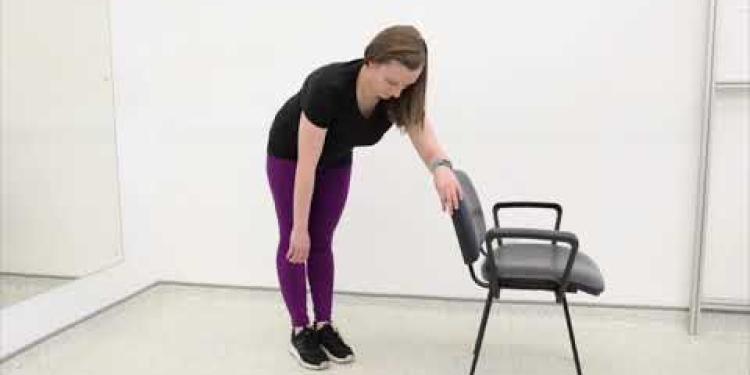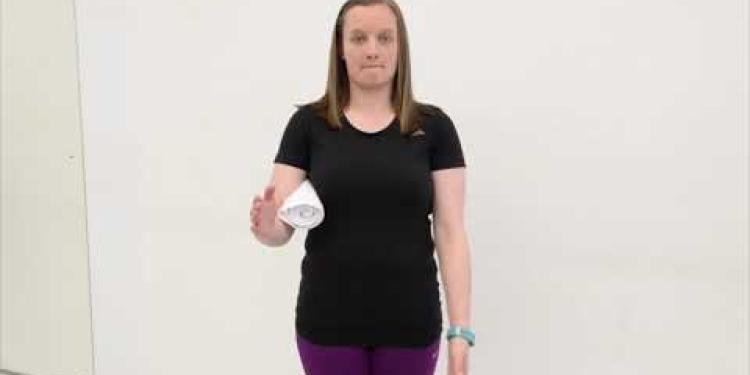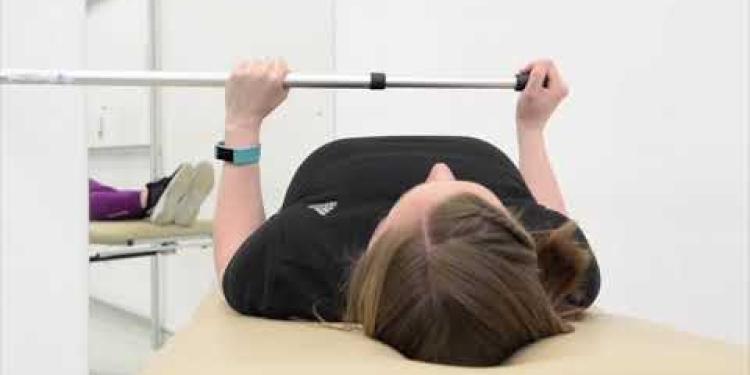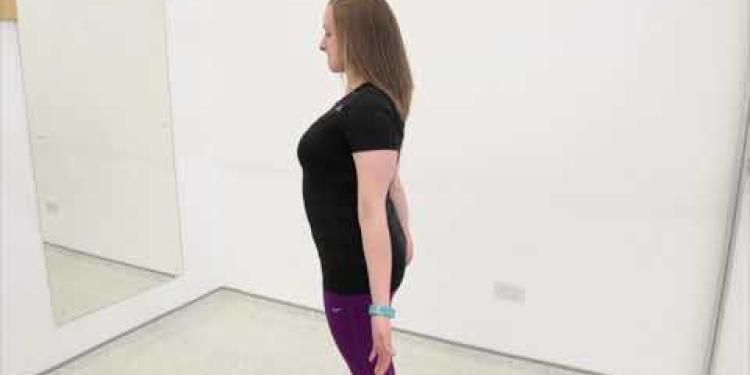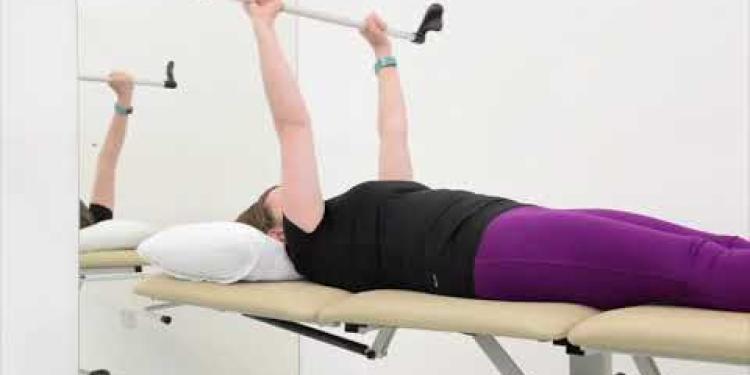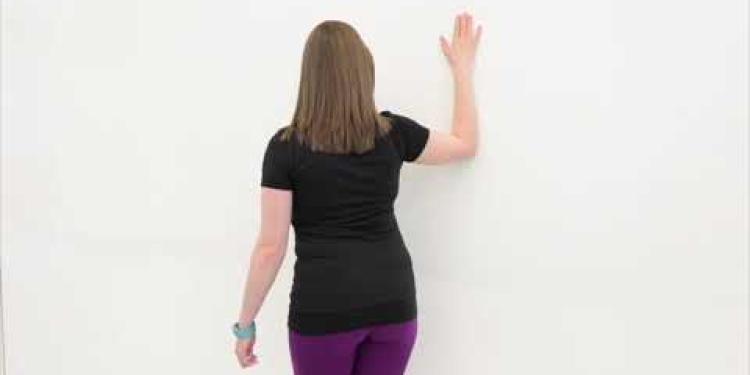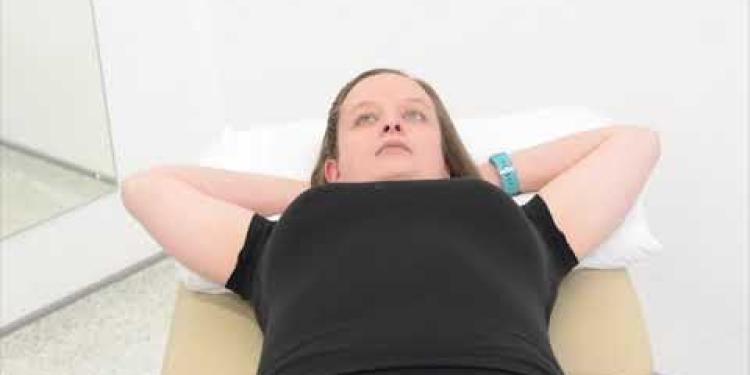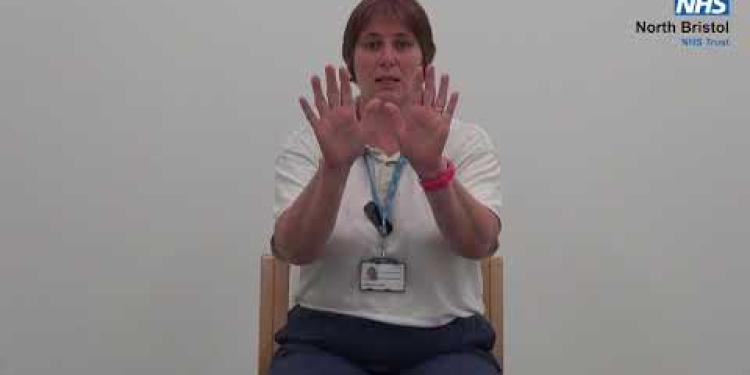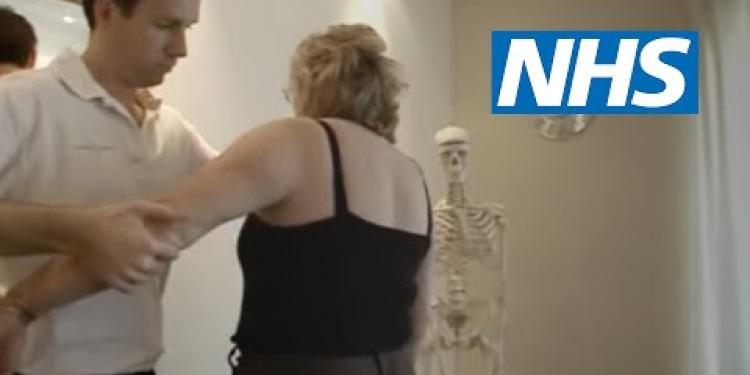Important Information On Using This Service
- Ergsy carefully checks the information in the videos we provide here.
- Videos shown by YouTube after a video has completed have NOT been reviewed by ERGSY.
- To view, click the arrow in the center of the video.
Using Subtitles and Closed Captions
- Most of the videos you find here will have subtitles and/or closed captions available.
- You may need to turn these on and choose your preferred language.
Turn Captions On or Off
- Go to the video you'd like to watch.
- If closed captions (CC) are available, settings will be visible on the bottom right of the video player.
- To turn on captions, click settings.
- To turn off captions, click settings again.
Find A Professional
More Items From Ergsy search
-
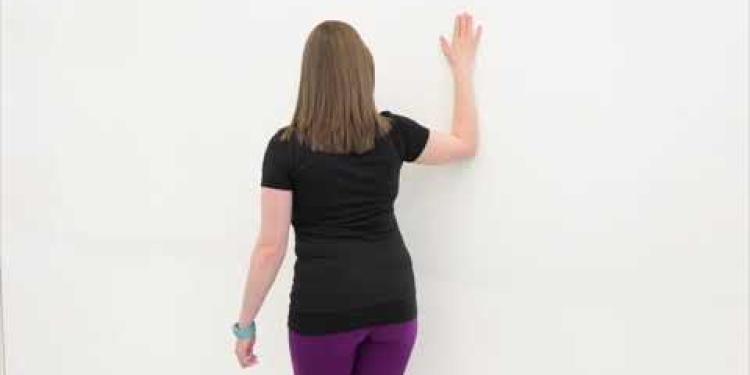
Frozen Shoulder Anterior Shoulder Stretch
Relevance: 100%
-
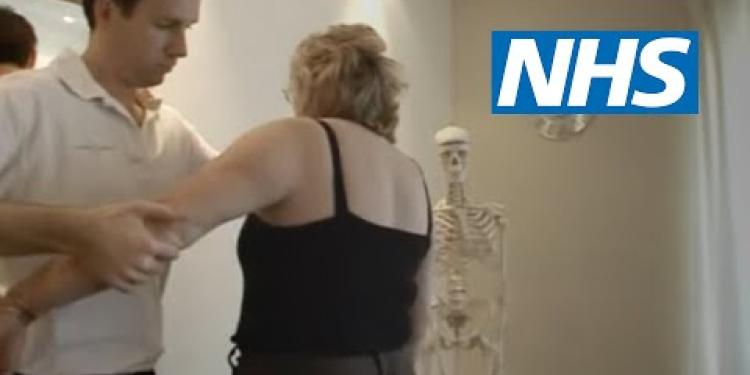
Shoulder pain | NHS
Relevance: 85%
-
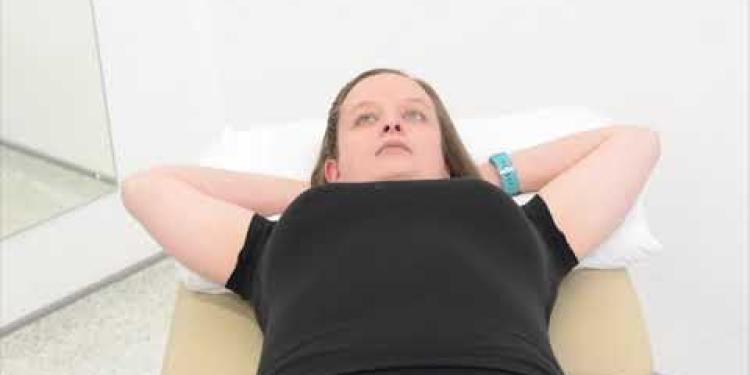
Frozen Shoulder Lateral Rotation
Relevance: 85%
-
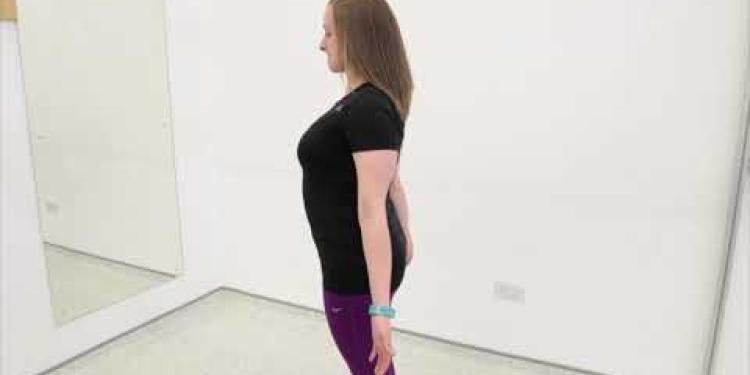
Frozen Shoulder Scapular Setting
Relevance: 84%
-
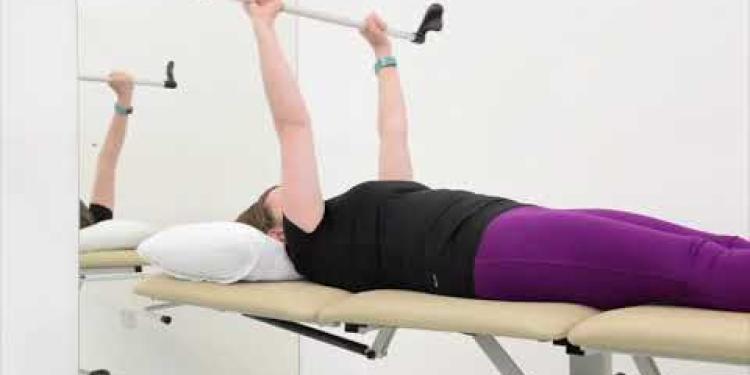
Frozen Shoulder Assisted Flexion
Relevance: 79%
-
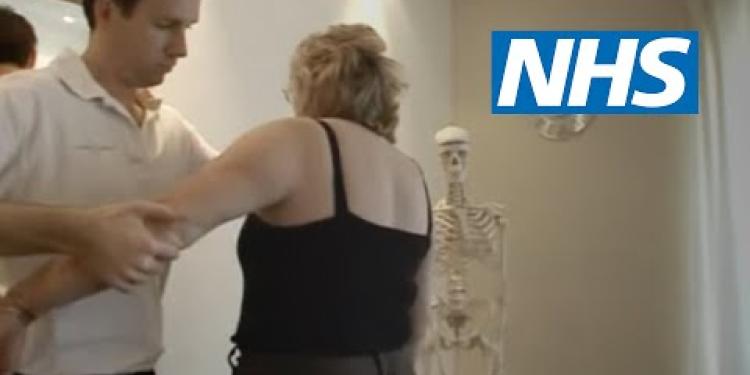
Shoulder pain | NHS
Relevance: 72%
-
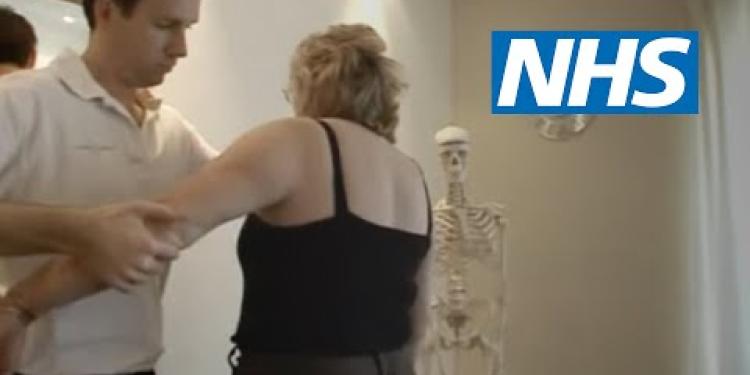
Shoulder pain | NHS
Relevance: 68%
-
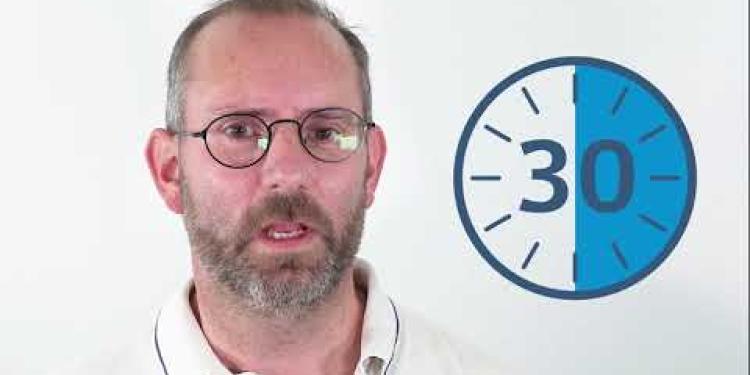
Shoulder subacromial shoulder pain
Relevance: 67%
-
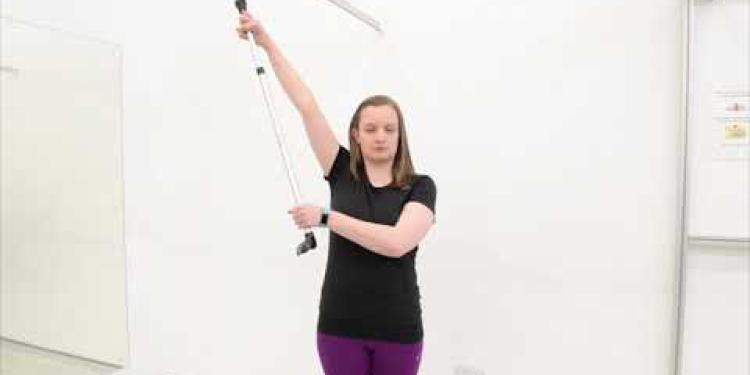
Frozen Shoulder Assisted Abduction
Relevance: 64%
-
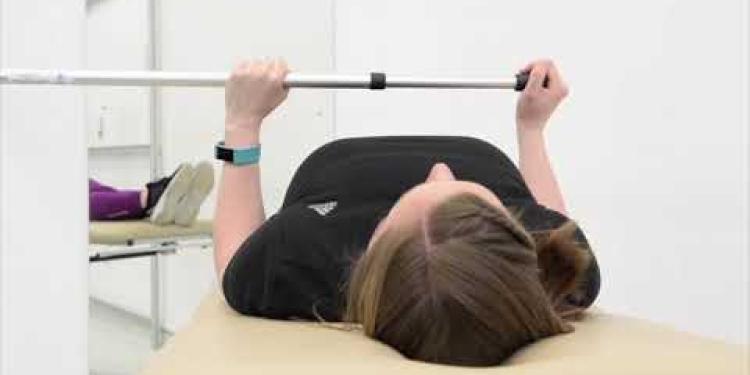
Frozen Shoulder Assisted Lateral Rotation
Relevance: 58%
-
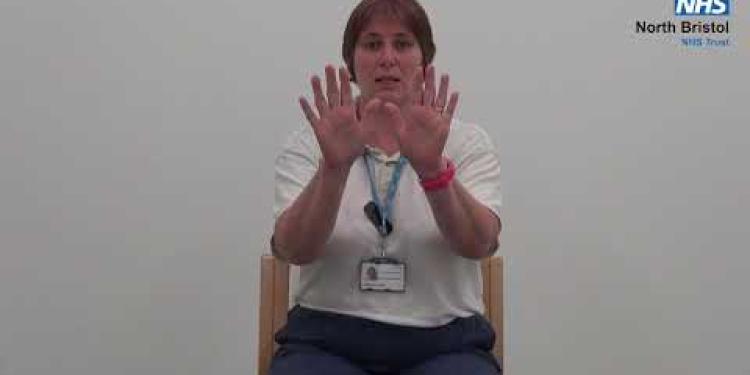
Shoulder Exercises 1
Relevance: 58%
-
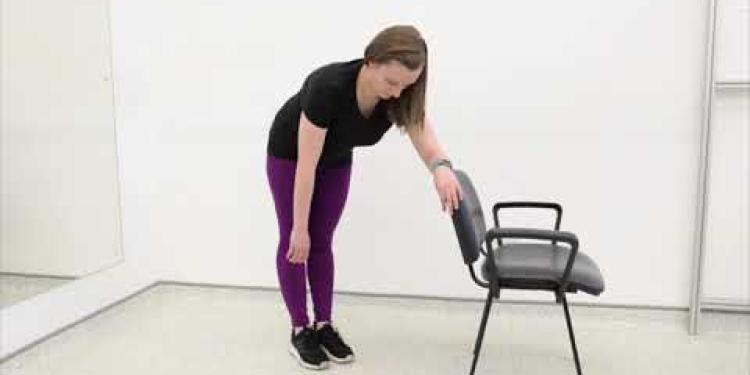
Frozen shoulder Pendular Exercises
Relevance: 54%
-
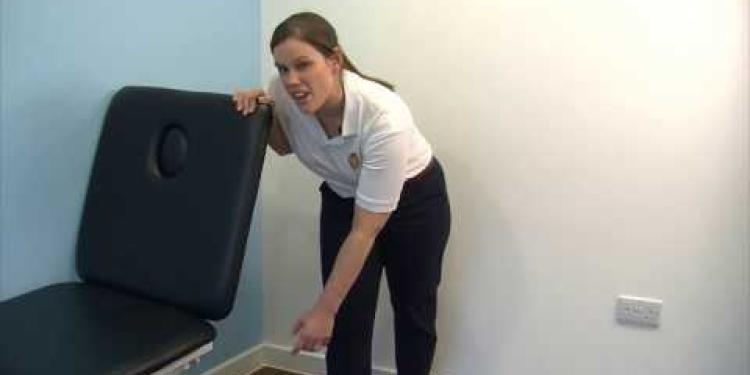
DBTH VFC DISLOCATED SHOULDER
Relevance: 53%
-
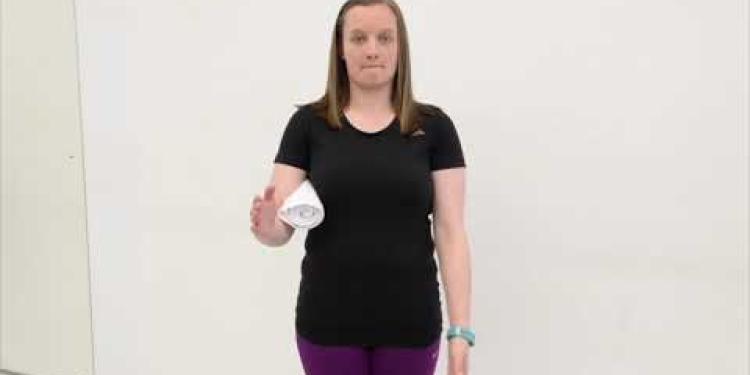
Frozen Shoulder Isometric External Rotation
Relevance: 47%
-

Unfreezing the Truth The UK's Frozen Pensions
Relevance: 33%
-
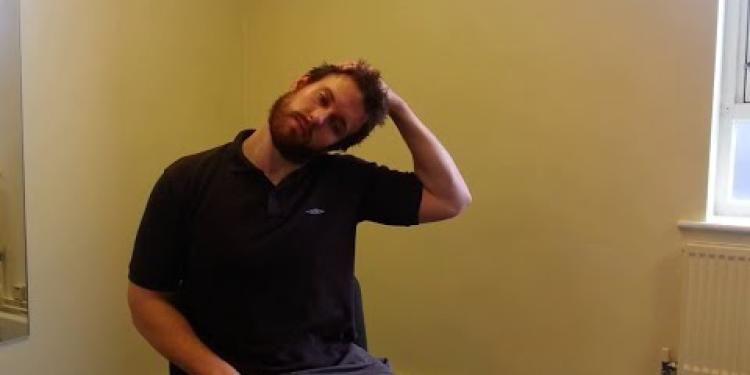
Neck Care Exercises
Relevance: 10%
-

Neck Exercises
Relevance: 8%
-
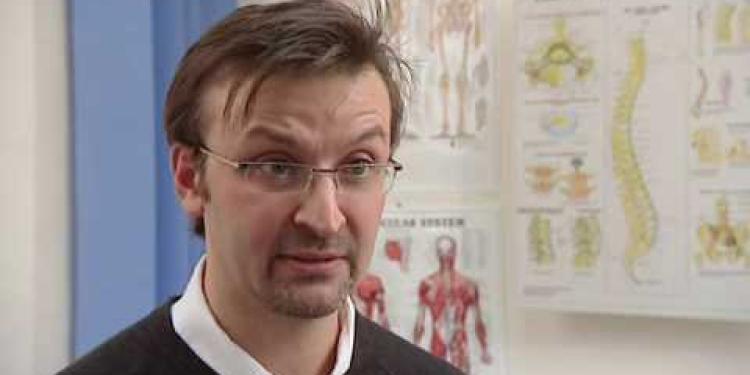
Advice on neck pain and whiplash
Relevance: 5%
-
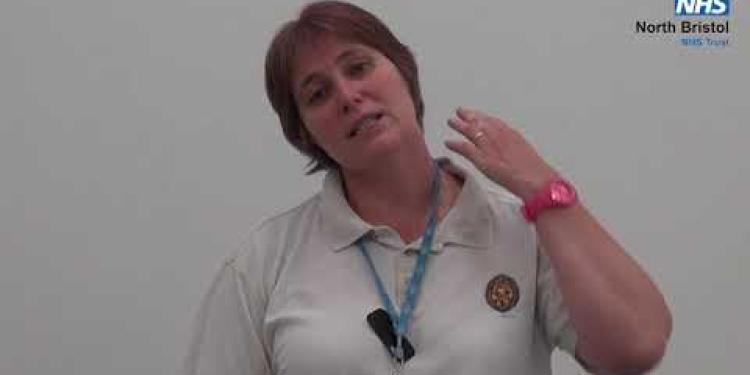
Neck Exercises
Relevance: 4%
-
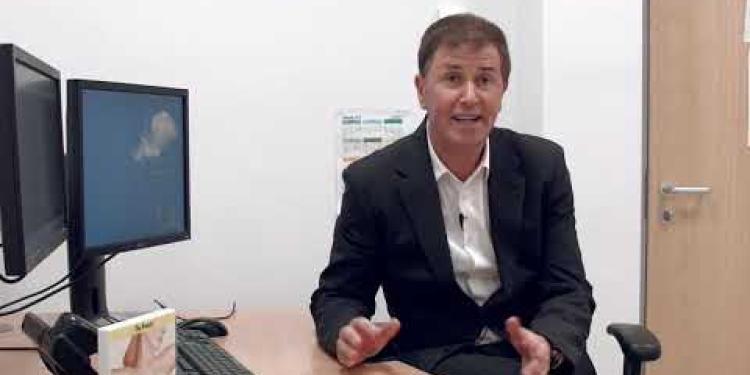
Evidence-Based Interventions: breast reduction
Relevance: 4%
-
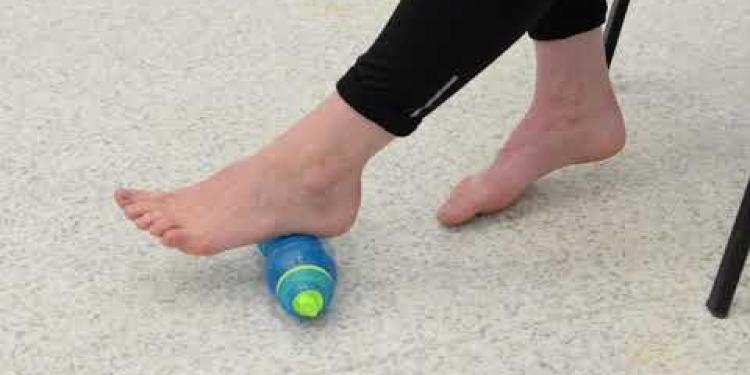
Plantar Fascia Cold Therapy
Relevance: 4%
-
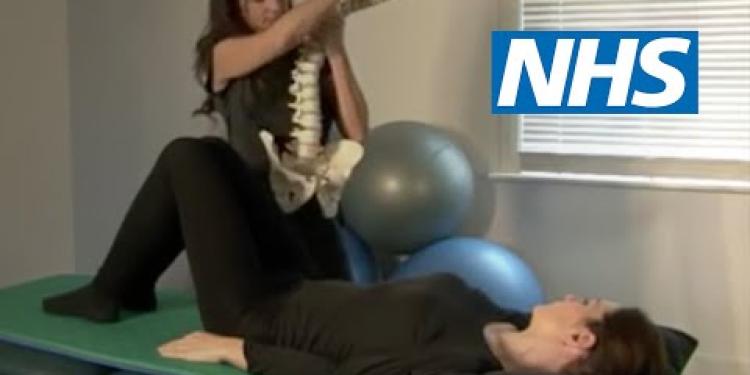
Exercises for sciatica: herniated or slipped disc | NHS
Relevance: 3%
-
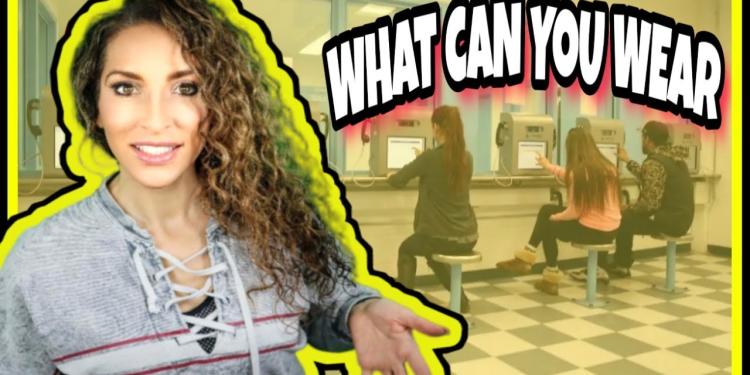
Visiting a Prisoner - What To Wear on a prison visit
Relevance: 3%
-
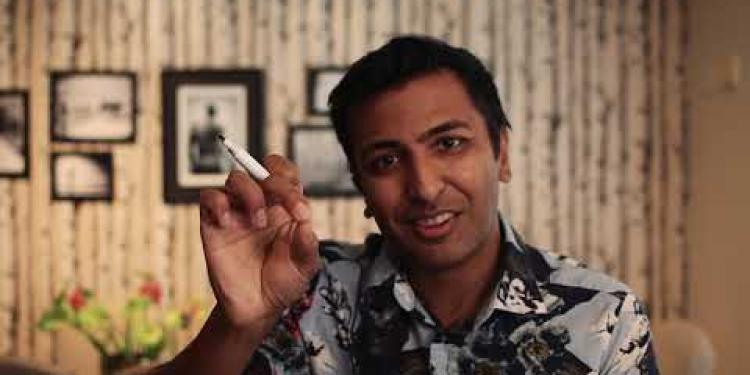
What is angina and how is it treated?
Relevance: 3%
-

Top 10 Tips for Healthy Eating
Relevance: 2%
-
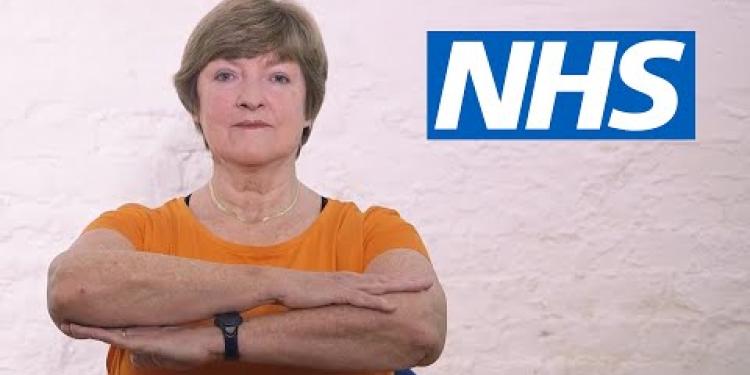
Pilates for back pain: Seated waist twist | NHS
Relevance: 2%
-
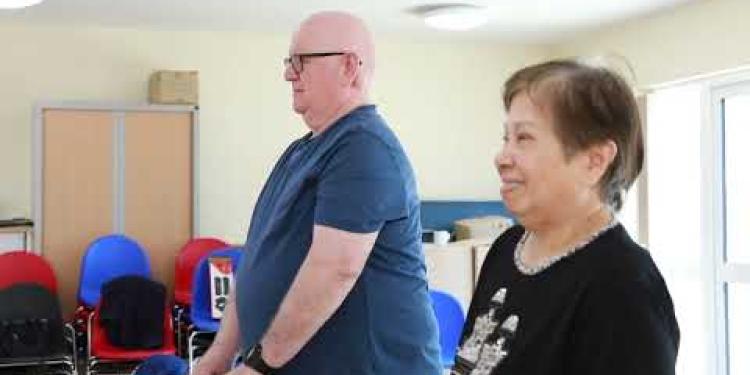
Falls Prevention - strength and balance exercises
Relevance: 2%
-
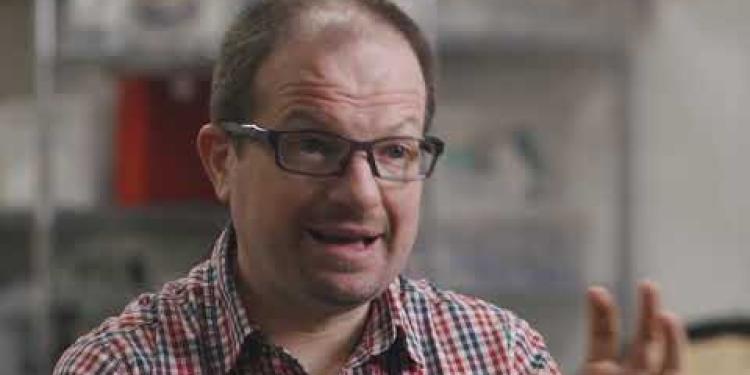
An Introduction to Decompression Illness: Signs & Symptoms”. Dr Roland Armes
Relevance: 2%
-

Are there any home remedies for nettle rash?
Relevance: 2%
-

How can nettle rash be treated?
Relevance: 2%
-
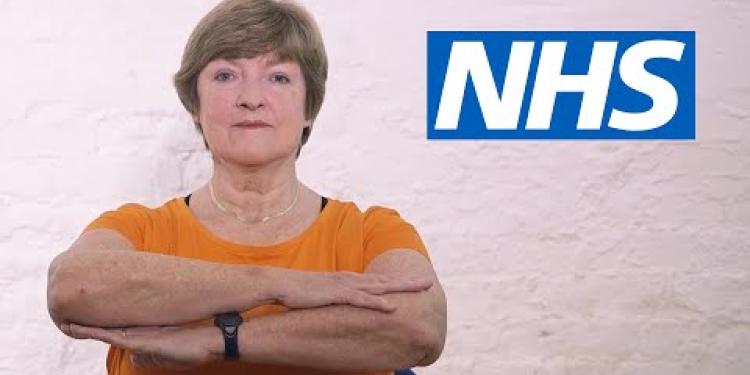
Pilates for back pain: Seated waist twist | NHS
Relevance: 2%
-
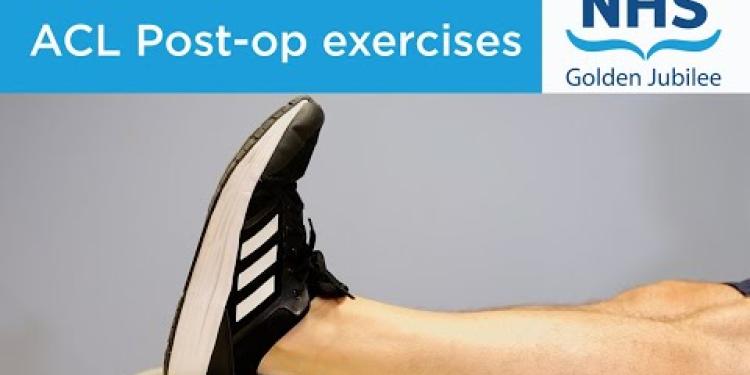
ACL exercises post-operation
Relevance: 2%
-
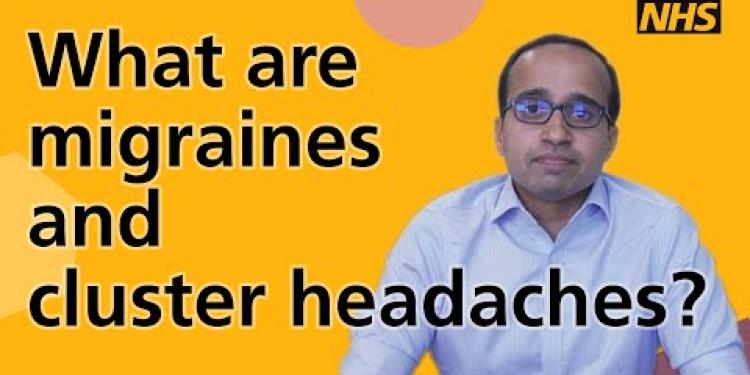
What are migraines and cluster headaches?
Relevance: 2%
-
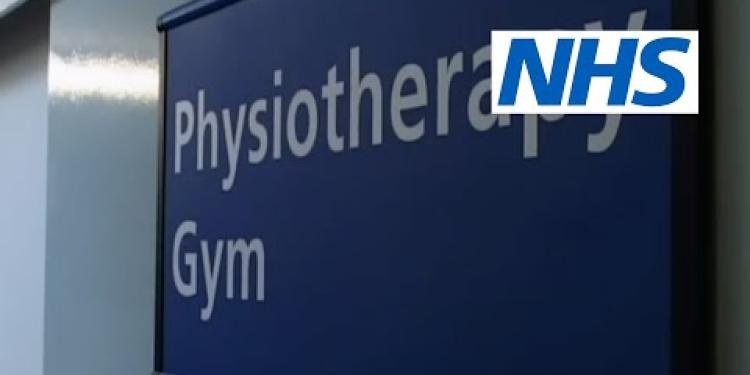
Back stretches | NHS
Relevance: 2%
-

About Breast cancer - signs and symptoms | NHS
Relevance: 1%
-
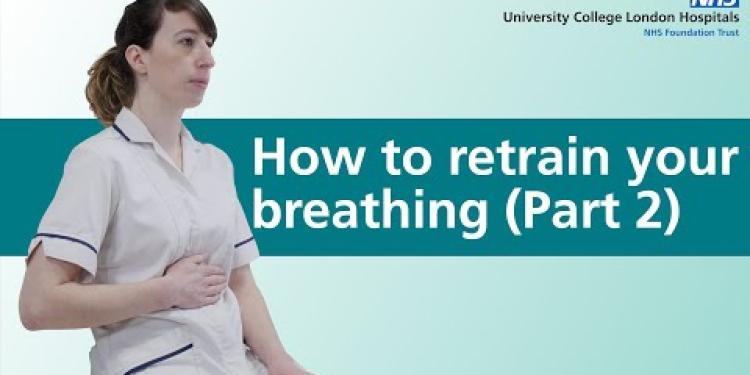
How to retrain your breathing | Part 2 | Asthma, long covid or breathlessness
Relevance: 1%
-
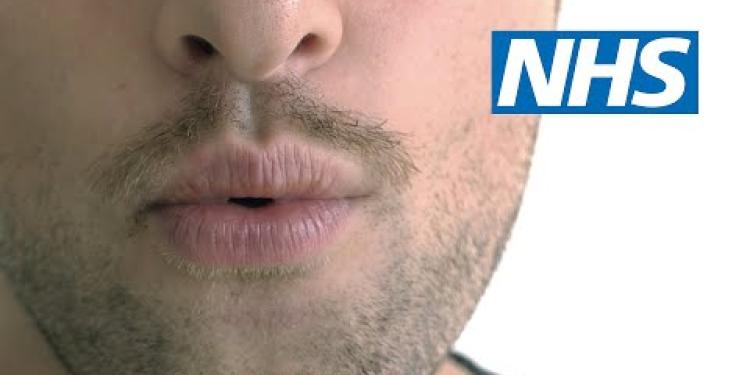
Tips for breathlessness | NHS
Relevance: 1%
-
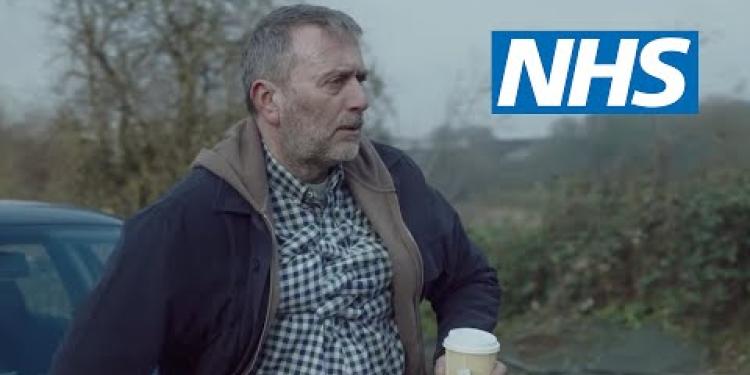
Heart Attack Symptoms - Help Us Help You | NHS
Relevance: 1%
-
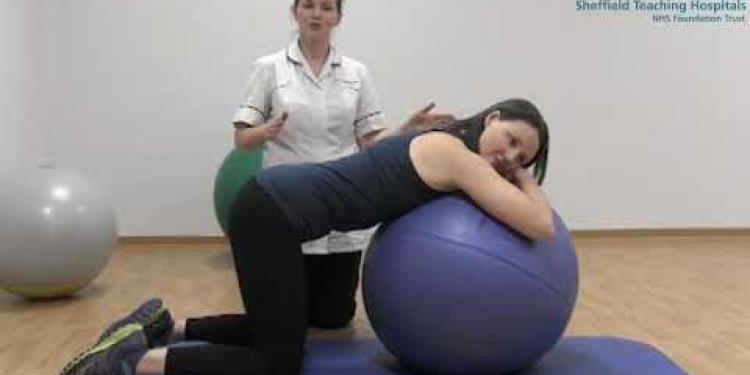
Mat and gym ball exercises with pregnancy related Pelvic Girdle Pain
Relevance: 1%
-

Infertility - IVF Treatment and Patient Information
Relevance: 1%
Frozen Shoulder Assisted Abduction
Understanding Frozen Shoulder
Frozen shoulder, medically known as adhesive capsulitis, is a condition characterised by stiffness and pain in the shoulder joint. It generally occurs gradually and can take anywhere from a few months to three years to resolve. The exact cause of frozen shoulder is not entirely understood, but it is more common in people with diabetes and those who've kept their shoulder immobilised for an extended period, such as after surgery or an injury.Importance of Assisted Abduction Exercises
For those suffering from frozen shoulder, engaging in assisted abduction exercises can be beneficial. These exercises involve moving the arm away from the body with the help of another person or a physiotherapy tool. Assisted abduction is crucial because it helps to stretch the shoulder muscles, improve range of motion, and reduce pain, thereby facilitating quicker recovery.Techniques for Assisted Abduction
There are various methods to perform assisted abduction, which can be tailored to the severity of the condition and the patient's comfort level. In many instances, a physiotherapist may gently guide the patient's arm outward while they lie on a flat surface. Alternatively, using a pulley system can help the patient participate actively while still receiving the necessary support.When to Seek Professional Help
While assisted abduction exercises are beneficial, it is vital to consult a healthcare provider before embarking on any exercise regime, especially in the United Kingdom where qualified physiotherapists can offer personalised treatment plans. These professionals ensure that exercises are performed correctly to avoid further damage to the shoulder.Resources and Support in the UK
In the UK, individuals suffering from frozen shoulder can access numerous resources for support and treatment. The NHS offers various physiotherapy services that specialise in shoulder rehabilitation. Additionally, organisations like Arthritis Research UK provide valuable information and resources that can aid in managing the condition effectively.Conclusion
Frozen shoulder can be a debilitating condition, but with the right approach and the use of assisted abduction exercises, patients can achieve significant improvements. It's crucial to seek professional guidance to ensure that exercises are both safe and effective. In the UK, many resources are available to support those dealing with frozen shoulder, ensuring they receive comprehensive care.Frozen Shoulder Assisted Abduction
What is Frozen Shoulder?
Frozen shoulder is when your shoulder feels stiff and hurts a lot. Doctors also call it adhesive capsulitis. It happens slowly and can last from a few months to three years. We do not know exactly what causes it, but it is more likely if you have diabetes or if you did not move your shoulder for a long time, like after surgery or an injury.Why Do Assisted Abduction Exercises?
If you have a frozen shoulder, assisted abduction exercises can help. In these exercises, someone else or a special tool helps you move your arm away from your body. These exercises are important because they help stretch your shoulder, make it move better, and hurt less. This helps you get better faster.How to Do Assisted Abduction
There are different ways to do assisted abduction. It depends on how bad your shoulder is and what you are comfortable with. A physiotherapist can help by gently moving your arm while you lie down. You might also use a pulley system to move your arm with help.When to Get Help from a Professional
Assisted abduction exercises are good, but you should talk to a doctor or physiotherapist before starting them. This is very important in the UK because they can make a plan just for you. The professionals help you do the exercises the right way so you do not hurt your shoulder more.Where to Find Help in the UK
If you live in the UK, there are many places to get help for a frozen shoulder. The NHS has physiotherapy services that can help fix your shoulder. Also, groups like Arthritis Research UK give helpful information to manage the condition.Summary
Frozen shoulder can make life hard, but with the right exercises, like assisted abduction, you can feel much better. It is very important to ask a professional for help to make sure the exercises are safe and good for you. In the UK, you can find lots of support to get the best care for your shoulder.Frequently Asked Questions
What is Frozen Shoulder?
Frozen shoulder, also known as adhesive capsulitis, is a condition characterized by stiffness and pain in the shoulder joint.
What causes Frozen Shoulder?
The exact cause of frozen shoulder is unknown, but it can occur after an injury or surgery, or due to conditions such as diabetes and stroke.
What are the symptoms of Frozen Shoulder?
Symptoms include pain and stiffness in the shoulder that makes it difficult to move. The condition typically develops in three stages: freezing, frozen, and thawing.
How is Frozen Shoulder diagnosed?
Diagnosis involves a physical examination by a healthcare professional, medical history evaluation, and imaging tests like X-rays or MRI if necessary.
What is assisted abduction for Frozen Shoulder?
Assisted abduction for frozen shoulder involves exercises designed to improve range of motion, where a therapist or a device helps move the shoulder through its range of motion.
How can assisted abduction exercises help?
These exercises help increase shoulder mobility, reduce pain, and avoid further stiffness by gently stretching and moving the shoulder joint.
Can I do assisted abduction exercises at home?
Yes, with guidance from your physiotherapist or healthcare provider, you can perform certain assisted abduction exercises at home.
What are some common assisted abduction exercises?
Common exercises include use of a wall climb, pulley systems, or having a partner assist in lifting the arm.
Is there any risk involved with assisted abduction?
If done improperly or too aggressively, assisted abduction can cause further injury. It’s essential to follow professional guidance.
How long does it take for Frozen Shoulder to improve with assisted abduction?
Recovery times vary, but with consistent exercise, many patients experience significant improvement within a few months.
Can Frozen Shoulder recur?
Yes, frozen shoulder can recur, particularly in the other shoulder or if the underlying cause is not addressed.
What other treatments are available for Frozen Shoulder in the UK?
Treatments can include physiotherapy, medication for pain relief, corticosteroid injections, and in severe cases, surgery.
Is surgery necessary for treating Frozen Shoulder?
Surgery is usually a last resort and is only considered if other treatments have failed to improve the condition.
Can physiotherapy alone cure Frozen Shoulder?
Physiotherapy is a highly effective treatment for frozen shoulder. While it may not 'cure' the condition instantly, it significantly improves mobility and reduces pain.
What should I do if my shoulder pain worsens during exercises?
Stop the exercises immediately and consult your healthcare provider to ensure that you are performing them correctly and to rule out any complications.
What is Frozen Shoulder?
Frozen shoulder is when your shoulder gets stiff and hurts. It can be hard to move.
If you think you have frozen shoulder, you can:
- Talk to a doctor. They can help you know what to do.
- Use an ice pack to feel better.
- Do some gentle exercises to help your shoulder move.
Remember to be patient, as it might take time to feel better.
Frozen shoulder, also called adhesive capsulitis, is when your shoulder gets stiff and hurts.
What Makes Shoulder Freeze?
A shoulder is frozen when it gets stiff and hard to move. This can happen when the shoulder is not used for a long time, like after an injury. It can also happen if something goes wrong inside the shoulder. In some people, this problem happens without any known reason.
To help your shoulder, you can do gentle exercises. You can also use heat packs to make it feel better. If the shoulder is very sore, a doctor can help with more treatments.
We do not know exactly what causes a frozen shoulder. Sometimes it can happen after you hurt yourself or have surgery. It can also happen if you have certain health problems like diabetes or after a stroke.
What happens when you have a Frozen Shoulder?
A Frozen Shoulder can cause:
- Pain in your shoulder
- Trouble moving your shoulder
- Feeling stiff in your shoulder
If you have these feelings, you can:
- Ask a doctor for help
- Try warm pads on your shoulder
- Do gentle shoulder exercises
If your shoulder hurts and feels stiff, it might be hard to move. This problem happens in three steps: freezing, frozen, and thawing.
How do doctors find out if you have Frozen Shoulder?
The doctor will check your body to find out what is wrong. They will ask you about your past health. If needed, they will take pictures of inside your body, like using X-rays or MRI.
What is Helped Movement for a Stiff Shoulder?
When your shoulder is very stiff, it is called a "frozen shoulder." It can be hard to move your arm. Helped movement is when someone or something helps you move your shoulder.
Here are some helpful ideas:
- Ask a friend or family member to gently help you lift your arm.
- Use a wall or door frame to help guide your arm movement.
- Try using a long stick or cane to support your arm as you move it.
These can help make your shoulder feel better and move more easily. Always make sure to move slowly and stop if it hurts too much. You can also ask a doctor or therapist for more help.
Assisted abduction for a frozen shoulder means doing special exercises to help your shoulder move better. A therapist or a tool can help you move your shoulder.
How do exercises that help move your shoulder help you?
These exercises help your shoulders move better. They can make pain go away and stop your shoulders from getting too stiff. You do this by gently stretching and moving your shoulders.
Can I do arm and leg exercises at home with help?
Yes, with help from your physiotherapist or doctor, you can do some special stretching exercises at home.
What are some easy leg stretch exercises?
Here are some leg stretch exercises you might like:
- Leg Raises with Help: Lie down and slowly lift your leg with someone holding your foot.
- Knee to Chest: Lie down, pull one knee to your chest, and someone helps you by holding your foot.
- Bridge Stretch: Lie on your back, bend your knees, and lift your hips up while someone supports your legs.
Always ask an adult to help and make sure it feels okay on your legs. If it hurts, stop right away. To help remember what to do, draw pictures or use an app with someone showing the exercises.
Here are some simple exercises you can do:
- Use a wall to help your arm move up and down.
- Use a pulley to lift your arm up.
- Ask a friend to help you lift your arm.
It can help to watch videos of these exercises. You can also ask an expert to show you how to do them safely.
Is it safe to get help if someone needs to be moved?
If you do it the wrong way or too hard, helping someone move their arm can make things worse. Always listen to a doctor or expert.
How long to get better from Frozen Shoulder with help moving your arm?
Everyone gets better at different speeds. If you keep doing exercises, you might feel a lot better in a few months.
Can Frozen Shoulder Come Back?
Yes, frozen shoulder can happen again. It might happen in the other shoulder if the problem causing it is not fixed.
What other help can you get for a Frozen Shoulder in the UK?
Treatments can help you feel better. They include exercises with a physiotherapist, taking medicine to stop pain, special injections that help with swelling, and sometimes an operation if needed.
Do you need an operation to fix a Frozen Shoulder?
Surgery is when doctors do an operation to help fix a problem in the body. Doctors only do surgery when nothing else works to make someone better.
Can exercise help fix a Frozen Shoulder?
Physiotherapy can help a lot with a frozen shoulder. It might not make it better right away, but it helps you move your shoulder more and makes it hurt less.
What should I do if my shoulder hurts more when I exercise?
If your shoulder hurts more when you exercise, here are some tips:
- Stop doing the exercises that make it hurt.
- Rest your shoulder and don't use it too much.
- Put a cold pack on your shoulder to help with pain and swelling.
- Ask an adult or see a doctor if it keeps hurting.
- Use apps or videos that show how to do easy and safe exercises.
Stop doing the exercises right away. Talk to your doctor to make sure you are doing them safely and that nothing is wrong.
Useful Links
Useful links from: Shoulder Exercises 1
- NHS - How to Exercise with Shoulder Problems The NHS provides a guide with videos and instructions on exercises designed to help with shoulder problems, including advice on how to do them safely.
- Versus Arthritis - Shoulder Pain Exercises Versus Arthritis offers a range of shoulder exercises specifically aimed at reducing pain and enhancing shoulder mobility, along with clear instructions and illustrations.
- Physio Med - Shoulder Exercise Videos Physio Med provides a selection of shoulder exercise videos that are helpful for rehabilitation and improving shoulder strength and flexibility.
- Arthritis Action - Exercise Videos Arthritis Action features exercise resources that include shoulder exercises to help manage arthritis symptoms and enhance joint function.
Useful links from: Frozen shoulder Pendular Exercises
- NHS - Frozen Shoulder Information provided by the NHS on the causes, symptoms, diagnosis, and treatment of frozen shoulder, including exercises that can help.
- NHS Inform - Frozen Shoulder Exercises Detailed guide by NHS Inform on exercises to improve shoulder mobility and reduce pain in frozen shoulder patients.
- Versus Arthritis - Frozen Shoulder Exercises Comprehensive resource on frozen shoulder provided by the UK charity Versus Arthritis, including recommended exercises and tips for managing pain.
- ShoulderDoc - Pendulum Exercises for Frozen Shoulder Advice from ShoulderDoc, a UK-based resource, on pendulum exercises specifically designed for individuals dealing with frozen shoulder.
Useful links from: Frozen Shoulder Isometric External Rotation
- NHS - Frozen Shoulder Comprehensive overview of frozen shoulder, covering causes, symptoms, treatment options, and exercises, including isometric exercises.
- Versus Arthritis - Frozen Shoulder Versus Arthritis provides detailed information on frozen shoulder, including symptoms, treatments, and exercises to manage the condition effectively.
- NHS Inform - Frozen Shoulder Exercises NHS Scotland's dedicated page for frozen shoulder exercises, including isometric exercises, to alleviate symptoms and improve movement.
- Arthritis Action - Frozen Shoulder Arthritis Action offers advice and resources on managing frozen shoulder, including exercise recommendations and isometric external rotation exercises.
Useful links from: Frozen Shoulder Assisted Lateral Rotation
- NHS - Frozen Shoulder Provides an overview of frozen shoulder, including symptoms, diagnosis, treatments, and self-help tips. The page also includes information on the causes and progression of the condition.
- Versus Arthritis - Frozen Shoulder Versus Arthritis offers detailed information on frozen shoulder, including symptoms, causes, and treatment options. The site also provides resources for managing pain and improving mobility.
- British Orthopaedic Association - Frozen Shoulder The British Orthopaedic Association provides insights into the diagnosis and management of frozen shoulder. This resource is geared towards patients seeking professional medical information.
- NHS Inform - Frozen Shoulder NHS Inform offers comprehensive information on frozen shoulder, from symptoms and causes to treatment options and self-care advice. It's a trusted resource for understanding this condition.
Useful links from: Frozen Shoulder Assisted Flexion
- NHS - Frozen shoulder (adhesive capsulitis) Comprehensive information on the symptoms, causes, diagnosis, and treatments of frozen shoulder, including exercises and therapies.
- Versus Arthritis - Shoulder pain Resource provided by a UK charity offering information on shoulder pain, including frozen shoulder, with advice on managing symptoms and available treatments.
- British Orthopaedic Association - Patient Guide: Frozen Shoulder Patient guide by the British Orthopaedic Association about frozen shoulder, providing insights on diagnosis, treatment options, and recovery.
- NHS Inform - Frozen Shoulder Scottish NHS resource detailing frozen shoulder, its stages, and advice on exercises and recovery methods.
Useful links from: Frozen Shoulder Anterior Shoulder Stretch
- NHS - Frozen Shoulder Comprehensive information on the causes, symptoms, diagnosis, and treatment of frozen shoulder provided by the National Health Service in the UK.
- Versus Arthritis - Frozen Shoulder Detailed guide on frozen shoulder including symptoms, treatments, and exercises. Versus Arthritis is a UK charity dedicated to supporting people with arthritis and related conditions.
- NHS - Exercises for Frozen Shoulder A set of recommended exercises to help relieve symptoms of frozen shoulder, as advised by the NHS.
- The Chartered Society of Physiotherapy - Frozen Shoulder Resource on frozen shoulder including causes, symptoms, and physiotherapy treatments. The Chartered Society of Physiotherapy is a UK professional, educational, and trade union body.
More Videos of Interestdiagnosis
Related Videosdiagnosis
Have you found an error, or do you have a link or some information you would like to share? Please let us know using the form below.
- Ergsy carfully checks the information in the videos we provide here.
- Videos shown by Youtube after a video has completed, have NOT been reviewed by ERGSY.
- To view, click the arrow in centre of video.
- Most of the videos you find here will have subtitles and/or closed captions available.
- You may need to turn these on, and choose your preferred language.
- Go to the video you'd like to watch.
- If closed captions (CC) are available, settings will be visible on the bottom right of the video player.
- To turn on Captions, click settings .
- To turn off Captions, click settings again.
